code and go robot mouse instructions
The Code and Go Robot Mouse is an interactive coding toy designed for kids to learn programming basics through play. It combines physical coding cards with a programmable mouse, teaching problem-solving and critical thinking skills in a fun, hands-on way.
Features of the Code and Go Robot Mouse
The Code and Go Robot Mouse is a programmable toy designed to teach coding fundamentals to kids. It includes 30 coding cards, 22 maze walls, 16 maze grid pieces, and 10 double-sided activity cards. The mouse itself is equipped with buttons for programming and executing commands. It also comes with tunnels and a cheese wedge for maze-building activities. The robot operates without a computer, making it accessible for young learners. The coding cards allow children to create sequences of instructions, teaching them about cause-and-effect relationships and logical thinking. The maze walls and grid pieces enable the creation of customizable obstacle courses, fostering problem-solving skills. Activity cards provide guided and open-ended challenges, encouraging creativity and critical thinking. The mouse’s design emphasizes hands-on learning, making it an engaging tool for introducing STEM concepts to children.
Benefits of Using the Robot Mouse for Coding Education
The Code and Go Robot Mouse offers numerous benefits for coding education, particularly for children. It introduces foundational programming concepts through hands-on activities, making learning engaging and accessible. The mouse helps develop critical thinking, problem-solving, and logical reasoning skills, essential for STEM fields. By using coding cards and maze setups, kids learn to sequence commands and understand cause-and-effect relationships. The tactile nature of the toy makes coding less intimidating, allowing young learners to experiment and see immediate results. It also fosters creativity and perseverance as children debug their code and refine their strategies. The Robot Mouse is an excellent tool for schools and homeschooling, providing an interactive way to build confidence in coding abilities. Its simplicity and versatility make it suitable for a wide range of age groups and skill levels.
What’s Included in the Code and Go Robot Mouse Kit
The Code and Go Robot Mouse Kit is a comprehensive STEM learning tool designed for hands-on coding experiences. Included in the kit are 30 coding cards, each representing different commands such as forward, turn, and repeat, allowing users to create sequences for the mouse to follow. The kit also features 22 maze walls and 16 grid pieces, enabling the assembly of customizable mazes that challenge problem-solving skills. Additionally, there are 10 double-sided activity cards offering guided and open-ended coding exercises. Three tunnels add complexity to maze designs, while the cheese wedge serves as a goal for the mouse to reach. The robot mouse itself is programmable via the coding cards, and its buttons allow for direct input of commands. The kit is complemented by an activity manual, providing step-by-step instructions and activity ideas to enhance learning. This kit is perfect for introducing coding concepts in an engaging and interactive manner.
Setting Up the Robot Mouse for the First Time
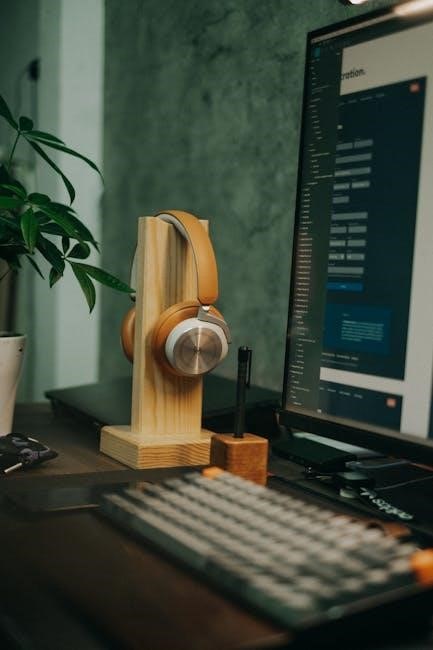
Setting up the Code and Go Robot Mouse is an exciting first step in your coding journey. Begin by carefully unboxing all components, including the mouse, coding cards, maze walls, grid pieces, cheese wedge, and tunnels. Ensure all items are accounted for to avoid missing parts. Next, assemble the maze by placing the grid pieces on a flat surface to form the base. Attach the maze walls to the grid to create obstacles and define the path. Position the mouse at a starting point within the maze and place the cheese wedge at the end as the target. Before programming, press and hold the yellow button on the mouse to clear any previous commands. Lay out your coding cards in the desired sequence to direct the mouse’s path. Once your commands are set, press the green button to execute the program and watch the mouse navigate the maze. If the mouse doesn’t reach the cheese, review your command sequence and maze layout to identify and fix any errors. Starting with simple commands and gradually increasing complexity will help build your coding skills effectively.

Basic Operation of the Robot Mouse
The Robot Mouse operates using simple button commands. Press the green button to execute actions, the blue button for movement, and the yellow button to clear commands. No computer required.
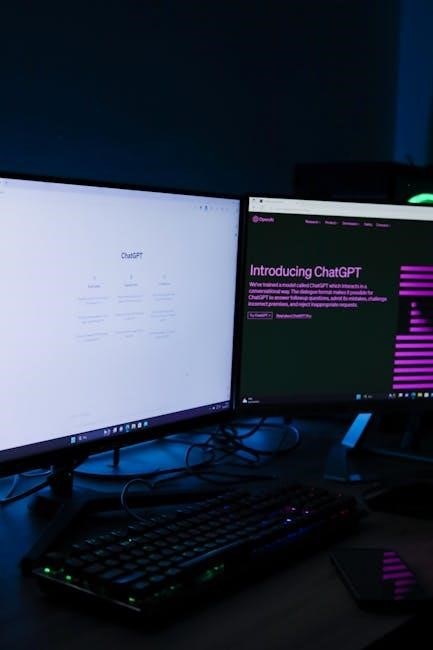
Understanding the Buttons and Their Functions
The Robot Mouse features a set of buttons that control its movements and actions. The green button is used to execute commands, while the blue button controls directional movements. The yellow button clears the mouse’s memory, allowing you to start fresh. Additionally, the mouse has directional arrows that specify movement directions, such as forward, backward, left, and right. Each button plays a crucial role in programming the mouse. For example, pressing the green button after setting a command ensures the mouse follows the programmed path. The cheese button is used to signal the mouse’s target. Understanding these buttons is essential for effective coding and navigation. Always remember to press and hold the yellow button to reset the mouse before starting a new sequence of commands. This ensures no previous commands interfere with your current program.
How to Program the Mouse Using Coding Cards
Programming the Robot Mouse involves using coding cards to create a sequence of commands. Start by laying out the cards to map the mouse’s path. Each card represents a specific action, such as moving forward, turning left, or turning right. Once the sequence is laid out, press the corresponding buttons on the mouse to input the commands. For example, select a “forward” card, press the blue forward button, and then press the green button to confirm. Repeat this process for each card in your sequence. After programming, press the green button to execute the commands. This method helps kids understand cause-and-effect relationships and basic coding logic. Encourage kids to experiment with different card combinations to see how the mouse responds, fostering creativity and problem-solving skills. Always remember to clear the mouse’s memory using the yellow button before starting a new program.
First Steps: Making the Mouse Move
To get started, place the Robot Mouse on a flat surface like a table or floor. Press and hold the yellow button to clear any previous commands. Next, press the blue arrow button once to set the mouse to move forward. Then, press the green button to execute the command. The mouse will move forward one step. This simple process introduces kids to the concept of coding and cause-and-effect relationships. Encourage them to experiment with different button combinations to see how the mouse responds. For example, pressing the blue arrow twice and then the green button will make the mouse move forward two steps. This hands-on approach helps build foundational coding skills and logical thinking. Always remind kids to press the yellow button to clear the mouse’s memory before starting a new sequence of commands. This ensures the mouse performs only the intended actions.

Using Coding Cards
Coding cards help map the mouse’s path. Lay them out to create a sequence of commands, teaching kids how to program and understand programming concepts through visual cues.
What Are Coding Cards and How Do They Work
Coding cards are physical cards with specific commands that kids can sequence to program the Robot Mouse. Each card represents a different action, such as “move forward” or “turn left.” By arranging the cards in a specific order, children can create a path for the mouse to follow. These cards are designed to introduce basic programming concepts in a hands-on, visual way. The mouse reads the commands stored on the cards when they are inputted into its memory. This method allows kids to experiment with coding without needing a computer. The cards are color-coded and feature intuitive icons, making it easy for young learners to understand and use them. By working with these cards, children develop problem-solving skills and learn the fundamentals of programming through trial and error. The mouse provides immediate feedback, helping kids see the results of their code and make adjustments as needed.
Creating a Sequence of Commands
Creating a sequence of commands with the Robot Mouse involves arranging the coding cards in a specific order to guide the mouse through a desired path. Start by laying out the cards on a flat surface and deciding the actions the mouse should perform. For example, to move the mouse forward and then turn right, place the “forward” card first, followed by the “right turn” card. Each card must be inputted into the mouse’s memory by pressing the green button after each card. The mouse will then execute the commands in the order they were entered. Encourage children to experiment with different sequences to see how the mouse responds. This hands-on approach helps develop logical thinking and problem-solving skills. As they progress, kids can create more complex sequences, such as navigating through mazes or reaching a specific target, enhancing their understanding of programming fundamentals.
Debugging Your Code
Debugging your code with the Robot Mouse involves identifying and fixing errors in the sequence of commands. If the mouse doesn’t follow the intended path, start by reviewing each coding card to ensure they are in the correct order. Check that the mouse is free from obstacles and that the surface is clear. Press the yellow button to clear the mouse’s memory and re-input the commands if necessary. Test the sequence in small parts by running a few cards at a time to isolate where the issue might be. Encourage kids to observe the mouse’s movements and compare them to their expected outcome. This process helps develop problem-solving skills and teaches the importance of precision in programming. By methodically checking each step, users can identify and correct mistakes, improving their understanding of how code works.
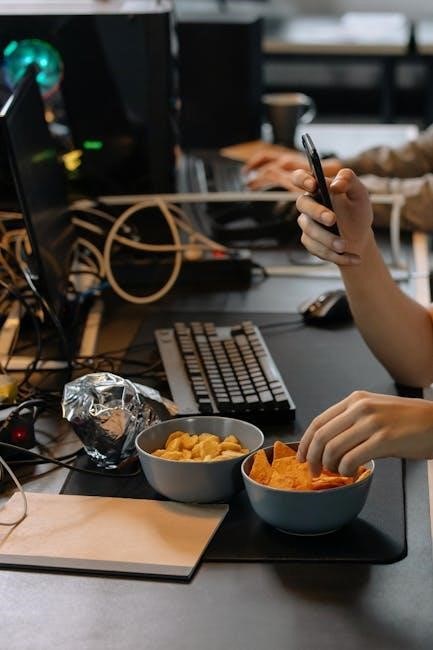
Maze Setup and Configuration
Assemble the maze grid, then use walls to create obstacles and tunnels for added complexity. This setup helps in designing challenging paths for the robot mouse.
Assembling the Maze Grid
To assemble the maze grid, start by laying out the 16 interlocking grid pieces to form a 4×4 grid. These pieces fit together seamlessly to create the base structure for your maze. Ensure the grid is placed on a flat surface and securely interlocked to prevent shifting during use. This grid serves as the foundation for designing the mouse’s path. Once the grid is assembled, you can begin adding walls and tunnels to create obstacles and challenges for the robot mouse. The grid’s layout will determine how you use coding cards to program the mouse’s movements. For younger users, it’s recommended to start with simple configurations and gradually introduce more complex designs as their skills improve. Proper assembly of the grid is essential for ensuring the mouse navigates accurately. Once set up, the grid is ready for maze walls and tunnels to be added, creating a dynamic environment for coding exercises.
Using Maze Walls to Create Obstacles
Maze walls are essential for creating challenges in the robot mouse’s path. With 22 wall pieces included, you can design various obstacles to test coding skills. Start by placing walls strategically around the grid to create a simple maze. As users gain confidence, introduce more complex configurations. Each wall piece snaps securely into the grid, ensuring stability. Use walls to block certain paths, forcing the mouse to take specific routes. This encourages problem-solving and critical thinking. For example, placing walls to form dead ends or narrow passages requires users to adjust their coding cards accordingly. The walls also help in visualizing the mouse’s path, making it easier to debug and refine code. Experiment with different wall placements to create unique mazes, keeping the learning experience engaging and dynamic. Proper placement enhances the effectiveness of the coding exercises, making maze-building a fun and educational activity.
Incorporating Tunnels into the Maze
Tunnels add an exciting dimension to the maze, allowing the robot mouse to navigate underneath obstacles. With three tunnel pieces included, you can create pathways that hide the mouse from view. To incorporate tunnels, place them between two grid pieces, ensuring they align properly. Tunnels can be used to create a multi-level maze, adding complexity to the mouse’s path. This feature challenges users to think creatively about coding sequences. For example, tunnels can help the mouse bypass walls or reach hidden targets. When using tunnels, ensure the coding cards account for the mouse’s movement through these hidden paths. Debugging becomes more engaging as users must consider both visible and hidden routes. Tunnels enhance problem-solving skills and make the maze visually appealing. They also encourage critical thinking, as users must plan sequences that guide the mouse through tunnels effectively. This adds depth to the coding experience, making it more dynamic and challenging.
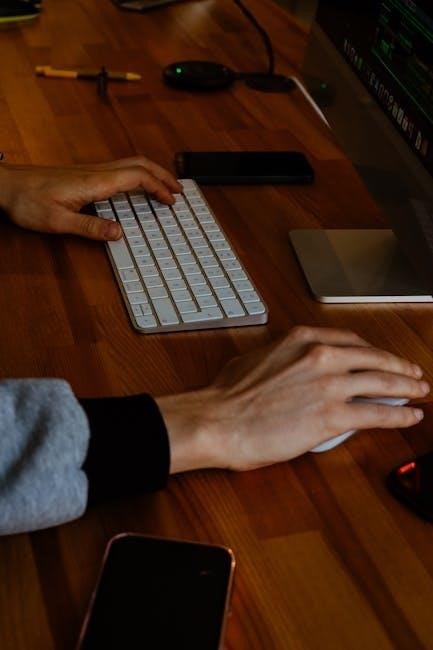
Activity Cards and Their Role
Activity cards provide step-by-step coding challenges, guiding kids to create specific paths and solve problems. They help master sequencing and debugging, making learning engaging and effective.
Understanding Activity Cards
Activity cards are double-sided resources that provide visual instructions and coding challenges for the robot mouse. One side features a story or maze setup, while the other offers step-by-step coding instructions. These cards help kids visualize the problem and create a solution using coding cards. They are designed to develop problem-solving and critical thinking skills, making coding engaging and interactive. Each activity aligns with educational standards, ensuring a structured learning experience. By following the cards, children can master sequencing commands and debugging, essential skills for programming. The activities are varied, catering to different learning levels and keeping the process fun and dynamic.
Sample Activities to Try
Engage your child with exciting activities designed to enhance coding skills. Start with a simple maze where the robot mouse navigates to find the cheese. Use coding cards to guide it through obstacles. Another activity involves storytelling, where kids create a path based on a narrative. For example, the mouse might deliver a letter by following a coded route. These activities foster creative thinking and problem-solving. Advanced challenges include using tunnels and multiple levels to test sequencing skills. Each activity is designed to be fun and educational, helping kids grasp coding fundamentals while staying engaged. These exercises are perfect for developing critical thinking and logical reasoning in a playful way, making learning to code an enjoyable experience for children.
Advanced Coding Techniques
Introduce advanced coding concepts like loops and conditionals to refine your programming skills. These techniques allow for more complex commands and sequences, enhancing problem-solving abilities and creativity in coding.
Using Loops and Repeats
Loops and repeats are essential advanced coding techniques that allow the robot mouse to perform a sequence of commands multiple times. This feature enhances efficiency and complexity in programming. To use loops, select the loop card, specify the number of repetitions, and arrange the desired commands within the loop. For example, a loop can make the mouse move forward repeatedly to navigate a long path or spin to create patterns. This technique is particularly useful for solving larger mazes or creating intricate designs. By incorporating loops, students can develop more sophisticated problem-solving strategies and understand how repetition simplifies coding. Encourage learners to experiment with loops to optimize their code and tackle challenging tasks. This advanced skill builds on foundational coding knowledge, promoting deeper understanding and creativity in programming.
Introducing Conditional Commands
Conditional commands introduce decision-making logic to your robot mouse’s programming, enabling it to adapt based on specific conditions. This advanced feature allows the mouse to make choices, such as “if it encounters a wall, turn left” or “if it reaches a tunnel, go through it.” These commands enhance the complexity of coding activities and encourage learners to think critically about different scenarios. To implement conditional commands, use the “if-then” coding cards, which instruct the mouse to perform certain actions only when a specific condition is met. For example, you can program the mouse to change direction upon sensing an obstacle or to collect a virtual reward when reaching a target. This feature is particularly useful for solving mazes with multiple paths or dynamic challenges. By mastering conditional commands, students can create more intelligent and adaptive programs, fostering deeper problem-solving and critical-thinking skills.

Tips for Effective Learning
Start with simple commands, guide learners to experiment, and encourage problem-solving through trial and error. Use visual aids like coding cards to help understand programming logic.
Encouraging Critical Thinking
Encourage learners to think logically by solving problems step-by-step. Using the Code and Go Robot Mouse, kids can experiment with coding cards to create paths for the mouse. This hands-on approach helps them visualize cause-and-effect relationships and understand how sequences of commands lead to specific outcomes. For example, they might arrange cards to navigate the mouse through a maze or around obstacles. Debugging is a key part of this process, as students analyze why their code isn’t working and adjust their commands accordingly. By breaking down challenges into smaller, manageable parts, they develop a systematic approach to problem-solving. This method fosters curiosity and builds confidence, teaching them to embrace trial and error as a natural part of learning. Over time, these skills translate into improved critical thinking abilities that extend beyond coding.
Developing Problem-Solving Skills
Using the Code and Go Robot Mouse, learners develop problem-solving skills through hands-on coding challenges. By creating sequences of commands with coding cards, kids learn to break down complex tasks into simpler steps. For instance, they might design a path for the mouse to navigate through a maze, requiring careful planning and execution. Debugging is a key part of this process, as students identify and correct errors in their code. This iterative approach teaches perseverance and adaptability. The robot mouse’s immediate feedback helps learners understand the consequences of their decisions and refine their strategies. Over time, these exercises build analytical thinking and the ability to approach challenges methodically. This skill development is essential for fostering confidence and preparing learners for more advanced coding and STEM concepts in the future.

Troubleshooting Common Issues
Identify issues like the mouse not moving or code errors. Check coding cards for proper alignment and ensure the mouse is on a flat surface; Clear memory by pressing and holding the yellow button to reset. Review command sequences for logical errors and ensure buttons are pressed correctly. These steps help resolve common problems efficiently and enhance learning.
Why Isn’t the Mouse Moving?
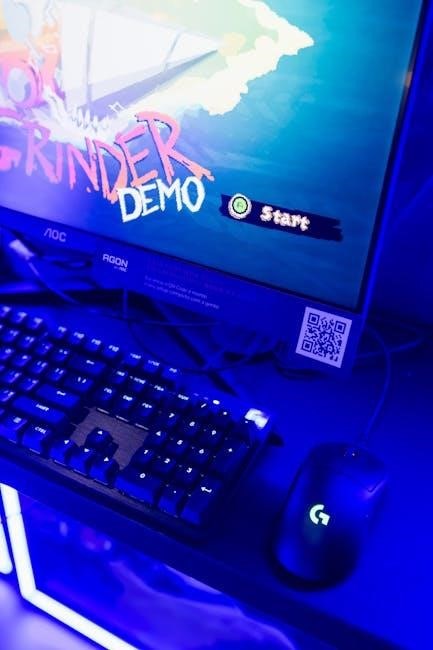
If the Code and Go Robot Mouse isn’t moving, several factors could be at play. First, ensure the mouse is placed on a flat, stable surface. Check if the coding cards are correctly laid out and aligned. Misaligned or incorrect cards can prevent the mouse from executing commands. Verify that the green button has been pressed after entering commands, as this triggers the mouse to perform actions. Also, check if the yellow button was pressed and held to clear previous commands, ensuring no old instructions are interfering. Finally, confirm that the mouse has enough battery power and that all buttons are functioning properly. By systematically addressing these potential issues, you can quickly resolve why the mouse isn’t moving and get it operational again.
Fixing Errors in Your Code
When the robot mouse doesn’t behave as expected, it’s time to debug your code. Start by reviewing the sequence of coding cards to ensure they are in the correct order and properly aligned. Check for any misplaced or misoriented cards, as this can disrupt the mouse’s path. Verify that each card’s command is clear and logical, avoiding conflicting instructions. If the mouse fails to complete a task, test individual cards one by one to identify where the issue occurs; Correct any mistakes by replacing or reordering the cards as needed. Remember to press the green button after making changes to execute the updated commands. Debugging is a natural part of the learning process, helping you refine your problem-solving skills and understand how coding works. Patience and persistence are key to mastering this interactive tool!
The Code and Go Robot Mouse offers a fun, hands-on introduction to coding, teaching kids problem-solving and critical thinking while fostering creativity and a love for STEM learning.
Final Thoughts on Coding with the Robot Mouse
Coding with the Robot Mouse is an engaging and effective way to introduce children to programming concepts. It combines hands-on learning with creative problem-solving, making STEM education accessible and fun. The mouse’s simplicity and interactivity allow kids to see immediate results from their coding efforts, fostering a sense of accomplishment and curiosity. By using coding cards and maze setups, children develop critical thinking and logical reasoning skills, which are essential for future academic and professional success. The Robot Mouse not only teaches coding fundamentals but also encourages creativity, patience, and perseverance. Its design makes it an excellent tool for both classroom activities and home learning, ensuring that kids can explore the world of coding in a playful and rewarding manner. This innovative toy is a great way to spark a lifelong interest in technology and problem-solving.
Encouraging Continued Learning
The Code and Go Robot Mouse is a powerful tool for fostering a love of learning in children. By introducing coding concepts in a playful, interactive way, it encourages kids to explore STEM subjects with curiosity and confidence. As they progress, the mouse’s tactile coding cards and maze-building elements challenge them to think critically and creatively. Parents and educators can support continued learning by celebrating small achievements, encouraging experimentation, and introducing more complex coding sequences. The inclusion of activity cards and debugging exercises also helps deepen problem-solving skills. By embracing the Robot Mouse as a learning companion, children can develop a strong foundation in coding and critical thinking, setting them up for future success in technology and beyond. This engaging tool makes learning feel like play, sparking a lifelong passion for discovery and innovation;
